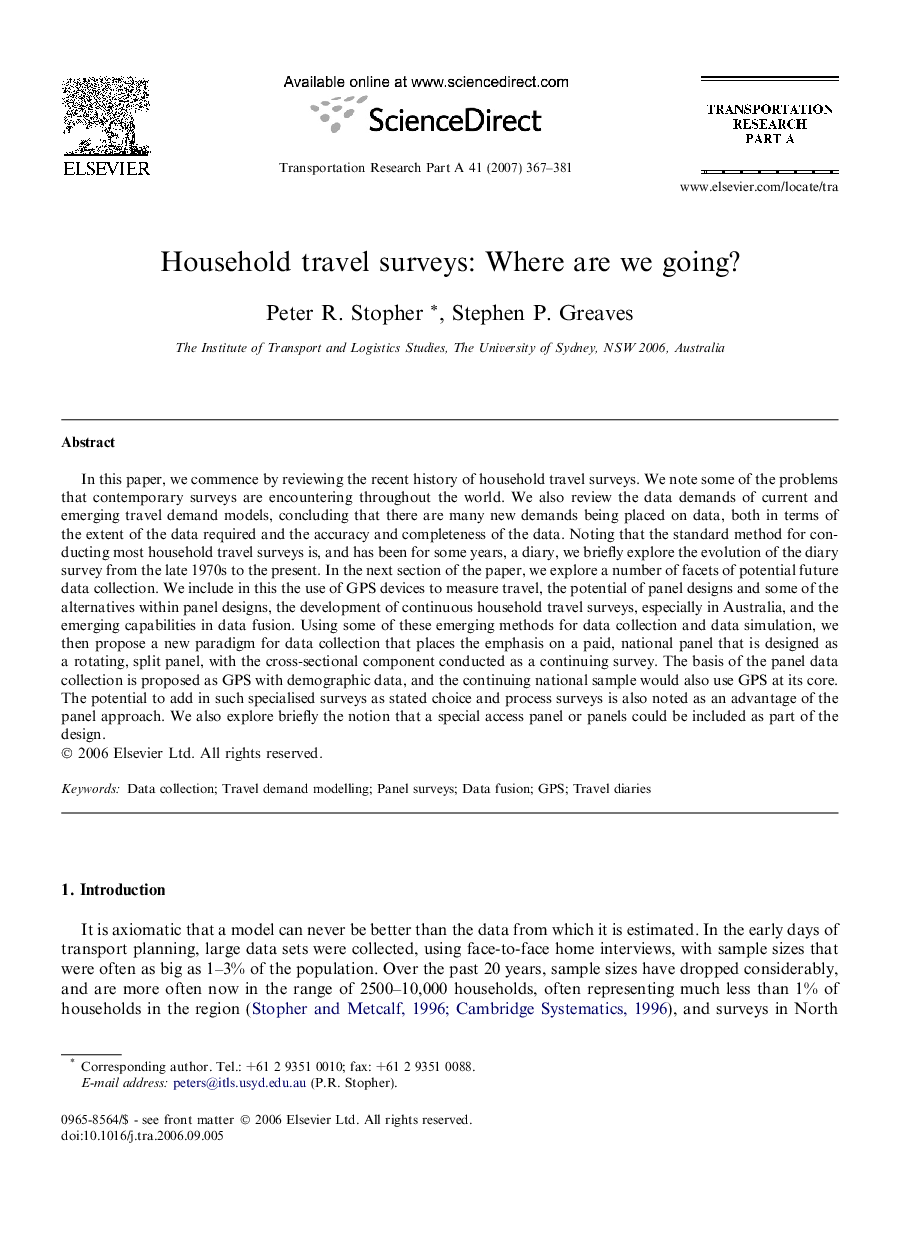| Article ID | Journal | Published Year | Pages | File Type |
|---|---|---|---|---|
| 312626 | Transportation Research Part A: Policy and Practice | 2007 | 15 Pages |
In this paper, we commence by reviewing the recent history of household travel surveys. We note some of the problems that contemporary surveys are encountering throughout the world. We also review the data demands of current and emerging travel demand models, concluding that there are many new demands being placed on data, both in terms of the extent of the data required and the accuracy and completeness of the data. Noting that the standard method for conducting most household travel surveys is, and has been for some years, a diary, we briefly explore the evolution of the diary survey from the late 1970s to the present. In the next section of the paper, we explore a number of facets of potential future data collection. We include in this the use of GPS devices to measure travel, the potential of panel designs and some of the alternatives within panel designs, the development of continuous household travel surveys, especially in Australia, and the emerging capabilities in data fusion. Using some of these emerging methods for data collection and data simulation, we then propose a new paradigm for data collection that places the emphasis on a paid, national panel that is designed as a rotating, split panel, with the cross-sectional component conducted as a continuing survey. The basis of the panel data collection is proposed as GPS with demographic data, and the continuing national sample would also use GPS at its core. The potential to add in such specialised surveys as stated choice and process surveys is also noted as an advantage of the panel approach. We also explore briefly the notion that a special access panel or panels could be included as part of the design.
